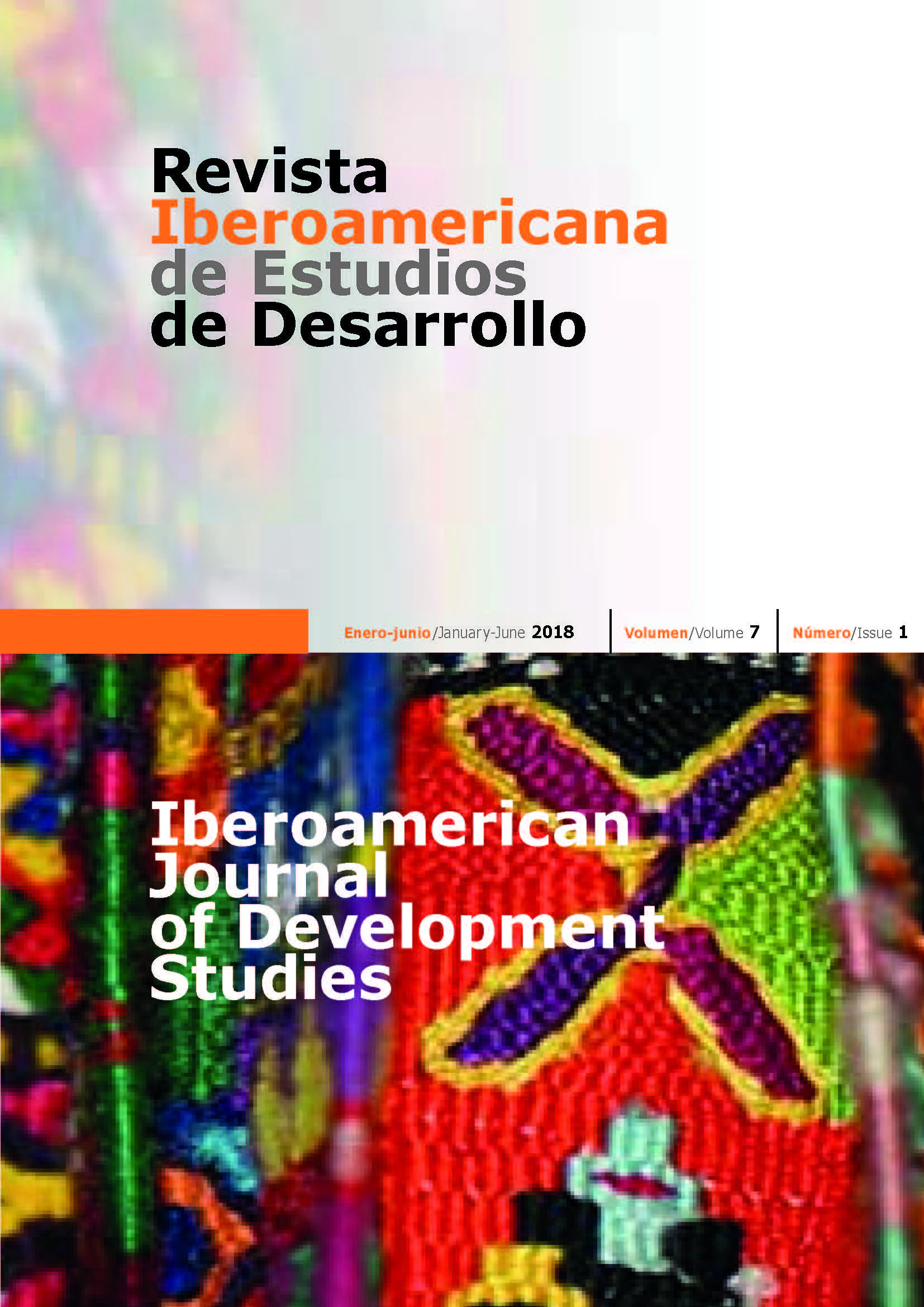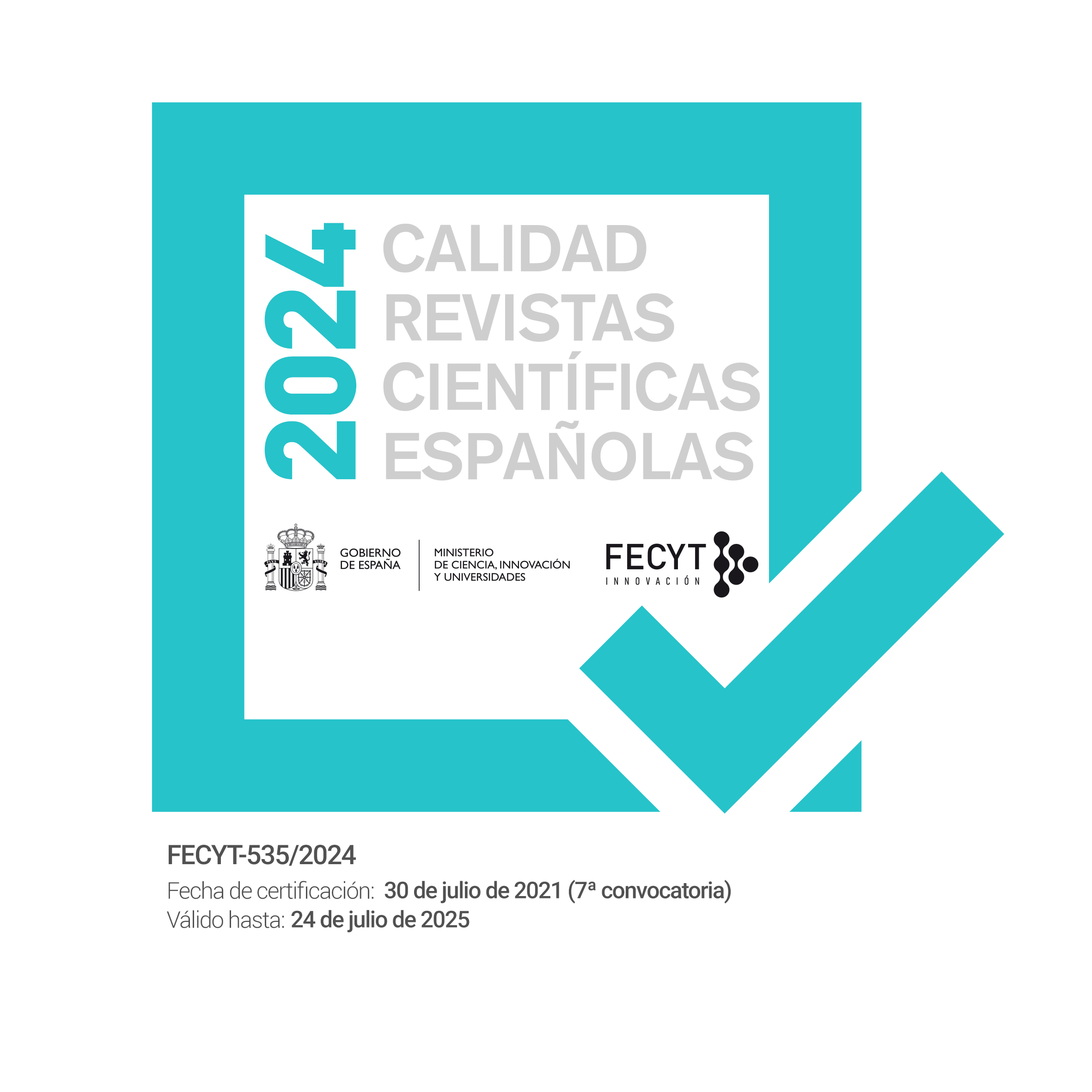The academic migration between Spain and Ecuador during the period of economic recession: a survival strategy of Spanish teachers and researchers?
DOI:
https://doi.org/10.26754/ojs_ried/ijds.272Keywords:
professional migration, academic migration, migratory geostrategy, lifestyle migration, colonialityAbstract
Within the flows of migrants with professional skills or education, Spanish academic migration has traditionally followed a North-North direction in its search for spaces of insertion. Nonetheless, during the economic crisis of the past few years, there has been a significant change and increase, directing migrants to counties in the global South. This change of direction is not a coincidence; it is in response to a geographic strategy which is articulated around two fundamental axes: securing teaching and research experience, which, in today’s Spain, is difficult to find yet key to enter or continue in Academia, and enjoying a quality of life which is not possible in Spain. By way of qualitative methodology, this paper attempts to highlight the principal elements and dynamics which make up this «new» geostrategic migration.
Downloads
References
ADAMS W (1968). The Brain Drain. Macmillan, Nueva York.
ALAMINOS A, SANCREU O, ALBERT M (2010). La movilidad social de inmigrantes españoles en Europa. REIS 129:13-35.
ALBA S, FERNÁNDEZ A, MARTÍNEZ-VEGA U (2013). Crisis económica y nuevo panorama migratorio en España. Fundación 1.º de Mayo, Madrid.
ALCALDE R, PETROFF A, CAVALCANTI L, ALARCÓN A (2014). Las migraciones de españoles hacia los Estados Unidos en el siglo xxi: un análisis desde las migraciones cualificadas. Camino Real. Estudios de las Hispanidades Norteamericanas 6(9):13-38.
ALONSO JA (2011). Migración internacional y desarrollo: una revisión a la luz de la crisis. Organización de las Naciones Unidas, Nueva York.
BACH S (2006). International mobility of health professionals. Brain Drain or Brain Exchange? Working Paper 28. World Institute for Economic and Development Research, Helsinki. https://www.wider.unu.edu/sites/default/files/rp2006-82.pdf, acceso 15 de marzo de 2017.
BENSON M, O’REILLY K (2009). Migration and the Search for a Better Way of Life: A Critical Exploration of Lifestyle Migraton. The Sociological Review 57(4): 600-625.
BERMÚDEZ RE (2010). Migración calificada e integración en las sociedades de destino. Sociedad y Economía 19:135-150.
BUSTAMANTE JA (1997). El marco teórico-metodológico de la circularidad migratoria: su validez empírica. Abstract: Sociológica. Revista de pensamiento social 2:77-119.
BYGNES S, BIVAND M (2017). Liquid migration, grounder lives: considerations about future mobility and settlement among Polish and Spanish migrants in Norway. Journal of Ethnic and Migration Studies 43(1):102-118.
CANNELL C, KAHN R (1993). La reunión de datos mediante entrevistas. En: Festinger L, Katz D (comps.). Los métodos de investigación en las ciencias sociales. Paidós, Barcelona, pp. 310-352.
DE HAAS H (2010). Migration and Development: A Theoretical Perspective. International Migration Review 44(1):227-264.
DE HAAS H, FOKKEMA T, FIHRI M (2015). Return Migration as Failure or Success?: The Determinant of Return Migration Intentions Among Moroccan Migrants in Europe. Journal of International Migration and Integration 16(2):415-429.
DUNCAN N, WALDORF B (2010). High Skilled Immigrant Recruitment and the Global Economic Crisis: The Effects of Immigration Policies. Purdue University Press, West Lafayette.
ERMOLIEVA E, KUDEYAROVA N (2014). La movilidad internacional de recursos humanos cualificados: nuevas tenencias «el caso español». Camino Real. Estudios de las Hispanidades Norteamericanas 6(9):39-55.
FINDLAY A (2002). From brain Exchange to brain gain: Policy implications for the UK of recent trends in skilled migration from developing countries, International Migration Papers, 43. International Labour Office, Ginebra.
FREEMAN G (2006). La incorporación de migrantes en las democracias occidentales. En: Portes A, DeWind J (eds.). Repensando las migraciones. Nuevas perspectivas teóricas y empíricas. INM, Universidad Autónoma de Zacatecas, Miguel Ángel Porrúa, México DF, pp. 131-156.
GEORGE U, CHAZE F, FULLER-THOMSON E, BRENNEN-STHL S (2012). Underployment and Life Satisfaction: A Study of Internationally Trained Engineers in Canada. Journal of Immigrant and Refugee Studies 10(4):407-425.
GLICK SCHILLER N (2015). Explanatory frameworks in transnational migration studies: the missing multi-scalar perspective. Ethnic and Racial Studies 38(13): 2275-2282.
GLICK SCHILLER N, SALAZAR N (2013). Regimes of Mobility Across the Globe. Journal of Ethnic and Migration Studies 39(2):183-200.
GOLASH-BOZA T (2015). Deported: Immigrant Policing, Disposable Labor and Global Capitalism. New York University Press, Nueva York.
GONZÁLEZ ENRÍQUEZ C (2013). Los nuevos emigrantes españoles. Fundación Real Instituto Elcano, Madrid. http://www.realinstitutoelcano.org/wps/portal/web/rielcano_es/contenido?WCM_GLOBAL_CONTEXT=/elcano/elcano_es/zonas_es/demografia+y+poblacion/gonzalez-enriquez-nuevos-emigrantes-espanoles , acceso 10 de marzo de 2017.
GONZÁLEZ ENRÍQUEZ C (2014). Fuga de cerebros. Fundación Real Instituto Elcano, Madrid. http://www.realinstitutoelcano.org/wps/portal/rielcano_es/contenido?WCM_GLOBAL_CONTEXT=/elcano/elcano_es/zonas_es/demografia+y+poblacion/comentario-gonzalezenriquez-fuga-de-cerebros-espana-braindrainspain , acceso 10 de marzo de 2017.
GONZÁLEZ FERRER A (2013). La nueva emigración española. Lo que sabemos y lo que no. Fundación Alternativas, Madrid.
GOYETTE M (2005). Redes sociales e inserción social: el interés de un enfoque relacional para la investigación en trabajo social. Tábula Rasa 3:223-251.
GROPAS R, TRIANDAFYLLIDOU A (2014). Emigrating in times of crisis. European University Institute, Florencia.
HARRIS J, TODARO M (1970). Migration, Unemployment and Development: A Two-Sector Analysis. American Economic Review 60(1):126-142.
HAYES M, PÉREZ-GAÑÁN R (2016). Nort South migrations and the asymetric expulsions of late capitalism: Global inequality arbitrage and new dynamics of North-South transnationalism. Migration Studie. 10.1093/migration/mnw030, acceso 16 de marzo de 2017.
HAYES MF (2014). We gained a lot over what we would have had: The Geographic Arbitrage of America’s Lifestyle Migrants to Cuenca, Ecuador. Journal of Ethnic and Migration Studies 40(12):1953-1971.
HAYES MF (2015). Moving South: The Economic Motives and Structural Context of North America’s Emigrants in Cuenca, Ecuador. Mobilities 10(2):267-284.
HERRERA G, CARRILLO MC, TORRES A (2005). La migración ecuatoriana. Flacso, Quito.
HUETE R, MANTECÓN A, ESTÉVEZ J (2013). Challenges in Lifestyle Migration Research: Reflections and Findings about the Spanish Crisis. Mobilities 8(3):331-348.
INE (INSTITUTO NACIONAL DE ESTADÍSTICA) (2014). Anuario estadístico de España. http://www.ine.es/prodyser/pubweb/anuario14/anu14_03educa.pdf, acceso12 de marzo de 2017.
INE (INSTITUTO NACIONAL DE ESTADÍSTICA) (2015). Encuesta de población activa. http://www.ine.es/daco/daco42/daco4211/epa0415.pdf, acceso 12 de marzo de 2017.
INE (INSTITUTO NACIONAL DE ESTADÍSTICA) (2017). Estadística de migraciones. http://www.ine.es/dynt3/inebase/index.htm?type=pcaxis&path=/t20/p277/prov/e01/&file=pcaxis, acceso 14 de marzo de 2017.
INJUVE. Instituto de la Juventud de España (2014). La emigración de los jóvenes españoles en el contexto de crisis. Ministerio de Sanidad, Servicios Sociales e Igualdad, Madrid.
KNOWLES C (2015). Young Londoners in Beijing, http://research.gold.ac.uk/ 18166/1/Beijing1_9_15%20FINAL.pdf , acceso 10 de marzo de 2017.
KOOLHAS M, PRIETO V, PELLEGRINO A (2013). Distribución territorial y características demográficas de la migración calificada. En: Pellegrino A (coord.). La migración calificada desde América Latina. Tendencias y consecuencias. Universidad de la República, Montevideo, pp. 27-62.
KORPELA M (2014). Growing up cosmopolitan? Children of Western Lifestyle Migrants in Goa, India. COLLeGIUM. Studies across disciplines in the humanities and social sciences 15(1):90-115.
LUCHILO L (2013). Estudiantes en movimiento: perspectivas globales y tendencias latinoamericanas. En: Pellegrino A (coord.). La migración calificada desde América Latina. Tendencias y consecuencias. Universidad de la República, Montevideo, pp. 63-90.
LUNDSTRÖM C (2014). White migrations: gender, whiteness and privilege in transnational migration. Palgrave Macmillan, Londres.
MAHROUM S (2001). Europe and the Immigration of Highly Skilled Labour. International Migration 30(1):31-45.
MARTÍNEZ J (2011). Crisis económica mundial y oportunidades de la migración cualificada. IV. Congreso de la RIMYD: Crisis global y estrategias migratorias:hacia la redefinición de las políticas de movilidad. Quito, 18-20 de mayo de 2011. http://www.cepal.org/celade/agenda/8/43648/jm_2010_crisiseconomicamigracioncalificadappt.pdf , acceso 5 de marzo de 2017.
MIGNOLO W (2002). The Geopolitics of Knowledge and the Colonial Difference. SAQ 101(1):56-96.
MIHI-RAMÍREZ A (2016). Trends in the International Academic Migration: A case of Spain. Entrepreneurial Business and Economic Review 4(1):113-128.
NYBERG-SORENSEN N, VAH HEAR N, ENGBERG-PEDERSEN P (2002). The migration development nexus evidence and policy options. State-of-the-art overview. International Migration 40(5):3-47.
O’REILLY K (2014). The role of the social imaginary in lifestyle migration: employing the ontology of practice theory. En: Benson M, Osbaldiston N (eds.). Understanding Lifestyle Migration. Palgrave, Londres, pp. 211-233.
OTEIZA E (1965). La emigración de ingenieros argentinos dentro del contexto de las migraciones internacionales: un caso de Brain Drain latinoamericano. Revista Internacional del Trabajo 72(6):6-10.
PATTERSON R (2006). Transnationalism: Diaspora-homeland development 84: 1891-1907.
PELLEGRINO A (1993). La movilidad internacional de fuerza de trabajo calificada entre países de América Latina y hacia Estados Unidos. Notas de Población 23(57):161-216.
PELLEGRINO A (2001). Trends in Latin America Skilled Migration. Brain Drain or Brain Exchange? International Migration 39(5):111-131.
RAMÍREZ R (2010). Transformar la Universidad para transformar la sociedad. Senplades, Quito.
RAMÍREZ R (2013). Justicia distributiva en la universidad ecuatoriana, 1996-2006 (Disputa teórico/práctica y política de la gratuidad en la educación universitaria). En: Ramírez R (coord.). Tercera ola de transformación de la Educación Superior en Ecuador. Secretaría Nacional de Educación Superior, Ciencia, Tecnología e Innovación (Senescyt), Quito, pp. 27-56.
RODRÍGUEZ-FARIÑAS MJ, ROMERO-VALIENTE JM, HIDALGO-CAPITÁN AL (2015a). Los exiliados económicos. La nueva emigración española a Ecuador (2008-2015). Obets. Revista de Ciencias Sociales 10(2):397-435.
RODRÍGUEZ-FARIÑAS MJ, ROMERO-VALIENTE JM, HIDALGO-CAPITÁN AL (2015b). Los exiliados económicos. La nueva emigración española a Chile (2008-2015). Revista de Geografía Norte Grande 61 (en prensa).
SECRETARÍA NACIONAL DE PLANIFICACIÓN Y DESARROLLO (SENPLADES) (2013). Plan Nacional del Buen Vivir Ecuador 2013-2017. http://www.buenvivir.gob.ec/ , acceso 23 de febrero de 2017.
SCHIFF M (2006). Brain Gain: claims about its size and impacts on welfare and growth are greatly exaggerated. En: Ozden C, Schiff M (eds.). International Migration, Remittances and the Brain Drain. Palgrave MacMillan, Washington DC, pp. 201-226.
URRY J (2007). Mobilities. Polity Press, Cambridge.
VALLES M (2002). Entrevistas cualitativas. Cuadernos metodológicos 32. CSIC, Madrid.
VAN DIJK T (1990). La noticia como discurso: Comprensión, estructura y producción de la información. Paidós, Barcelona.
VAN DIJK T (2003). Ideología y discurso. Ariel, Barcelona.
VAN NOORLOOS F, STEEL G (2015). Lifestyle Migration and Socio-Spatial Segregation in the Urbanizing Landscapes of Cuenca (Ecuador) and Guanacaste (Costa Rica). Habitat International 54:50-57.
VAUGHAN-WILLIAMS N (2015). «We are not animals»: Humanitarian border security and zoopolitical spaces in Europe. Political Geography 45:1-10.
VEGA C, GÓMEZ C, CORREA A (2016). Circularidad migratoria entre Ecuador y España. Transformación educativa y estrategias de movilidad. Migraciones 39: 183-210.
WODAK R (2002). Methods of Critical Discourse Analysis. SAGE, Londres.
WORLD BANK (2014). World Development Indicators 2014: Movement of people across borders. World Bank, Washington D.C. http://wdi.worldbank.org/table/6.13, acceso 10 de marzo de 2017.
Downloads
Published
How to Cite
Issue
Section
License
Copyright (c) 2018 Rocío Pérez-Gañán, Gorka Moreno

This work is licensed under a Creative Commons Attribution-NonCommercial-NoDerivatives 4.0 International License.








